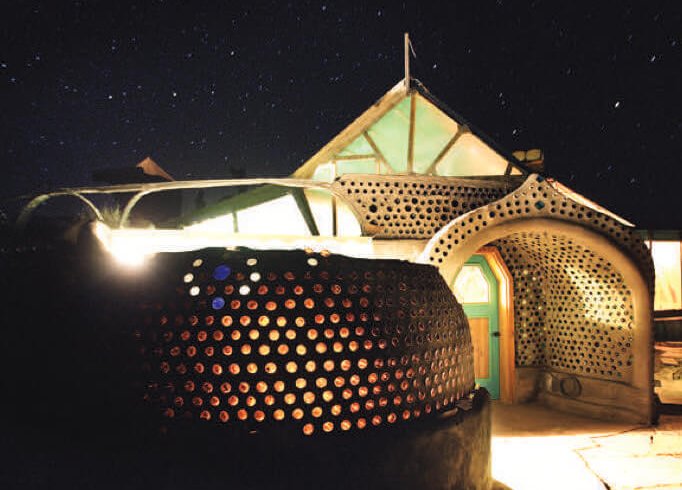For a fleeting moment in November 1989, the staid campus of Ohio State University was the centre of the architectural universe. The occasion was the gala unveiling of the school’s Wexner Center for the Arts, a gallery and performance space designed by Peter Eisenman, who had recently become one of the most celebrated architect-intellectuals in the avant-garde firmament. The year before, his conceptual work had been featured in a landmark exhibit at the Museum of Modern Art in New York, curated by no less than renowned postmodern architect Philip Johnson. It was called Deconstructivist Architecture, and though it included several future superstars—among them Frank Gehry, Daniel Libeskind, and Rem Koolhaas—it was Eisenman who most fully embodied the theoretical bent of the show.
Eisenman liked to talk about distinguishing architecture from mere building, liberating it from the plebeian world of functionality. His designs were not to be lived in but marvelled at, and his sketches could easily be mistaken for rough drafts of a mind-melting Escher drawing. They didn’t look like they even could be built, and precious few of them had been. Instead, Eisenman had based his growing acclaim mostly on his rare virtuosity in the articulation of bold declarations and the crafting of astonishing theory. He was the latest in a line of visionaries who traced back through the likes of Richard Meier, Mies van der Rohe, and Johnson himself, to the legendary Bauhaus and the undisputed twentieth-century champion of the craft, Le Corbusier.
Eisenman’s Wexner Center was the first deconstructivist building unveiled since the canonical MoMA show. It was also his first major commission, the most tangible expression yet of his architectural philosophy. And as promised, it was not very functional: within a couple of years of the gala opening, the Wexner Center’s skylights began to leak. Inside, the temperature fluctuated as much as 40 degrees Fahrenheit over the course of a day, and several of its glass facades were oriented so that they encouraged sun damage to the artwork hanging within. In recent years, the Wexner Center has been given a $15.8-million (US) retrofit to correct its many glaring oversights. Eisenman, asked for comment by the New York Times in 2005, pointed out that similar problems had plagued the experimental designs of Gehry and Mies and even old Corbu himself—as if to say that you couldn’t expect a great master to fuss over such incidental details.
I mention all of this because there’s a MoMA-sized enthusiasm building around the idea of sustainable architecture just now, and in some respects it continues to be dominated by a modernist aesthetic, despite the life-and-death practicality that’s feeding the buzz in the first place. This nascent sustainability boom is a direct response to the emerging catastrophe of climate change, and on the surface it would seem to compel a return to the basics: workaday, theory-proof stuff like energy efficiency, insulation, ventilation, and natural light. In his 1973 bestseller Small Is Beautiful: A Study of Economics as if People Mattered, the iconoclastic economist E. F. Schumacher recommended the construction of “a life-style designed for permanence”—as succinct a working definition of sustainability as any I’ve found. Shorn of its original activist connotations and more recent corporate spin, sustainability dictates a reordering of priorities that returns matters of ecology to their paramount position.
In architectural terms, sustainability demands a return to questions of how to build things instead of merely why. Architecture has long been a tug-of-war between artistic expression and engineering practicality, and indeed Corbu-style modernism was a direct response to belle époque aesthetic excesses in the years before World War I. Many of the original modernists, fond as they were of theory, also obsessed over the practical potential of modernity’s wondrous new materials and technical tricks. Alas, the phase ushered in by Eisenman’s Ohio State debut has marked a return to a sort of baroque intellectual ornamentation, demonstrating with increasing vividness the tragic oversight embedded in the battle cry of “starting from zero” that fired the imaginations of those original European artists: amid all their manifestos denouncing bourgeois adornment, modernism’s innovators have come to forget that there is no zero in nature. You could no more expect the same building to function with identical results anywhere in the world than you could expect the same species of tree to thrive in all the world’s forests. Modernism and its postmodern deconstructivist descendants are prone to mammoth inefficiencies that may be intrinsic to their design approaches.
Strangely enough, the modernist aesthetic continues to dominate, even in the new field of sustainable architecture. The preferred approach to date has been to retrofit modernist designs with every gizmo and sleight-of-hand trick on the energy efficiency market. The skyscrapers of Norman Foster (particularly the elegant passive-solar Bow building now under construction in Calgary) and Robert Fox (whose Condé Nast and Bank of America towers in Manhattan are the examples of first resort in a great many sustainable architecture discussions) might be the most efficient high-rises the free world has yet seen, but they are still, at their core, modernist cubes and curves in glass and steel. It might well be that there’s no such thing as a truly sustainable skyscraper, but such fundamental questions haven’t been given even cursory explorations.
Move to the more pedestrian level of housing, and the practice of sustainable architecture shows even less evidence of any reconsideration of basic assumptions. A sprawling McMansion—even one roofed in solar panels—is still a ridiculously inefficient design. There’s an exemplary demonstration project in southern Alberta—a $19-million subdivision in the town of Okotoks, heated by a solar-powered district heating system—and yet the consortium of government agencies and private developers overseeing it decided to build the actual houses to resemble energy-indifferent, cookie-cutter suburban homes as much as possible. Or consider the September 2006 issue of the sustainability-obsessed hipster shelter bible Dwell magazine. “Green Goes Mainstream” read the cover line above a photo of a Spanish house that, save for its grass-carpeted roof, was essentially a handful of interlocking modernist glass cubes and concrete slabs. Inside, the magazine’s recurring Off the Grid column featured a house that wasn’t off the grid, actually: the sleek new residence of Santa Monica’s green-building adviser, a concrete and glass slab on pilings over a multi-vehicle carport. It was extremely efficient, but it was still tethered to the same electrical grid as the rest of Los Angeles.
It would be one thing if actual off-the-grid living didn’t exist in the modern world—or if, as Dwell’s editor glibly asserted, it was still the exclusive domain of “hilltop yurts with batik curtains and purple carpeting.” There’s the short-sightedness of sustainable architecture’s would-be mainstream champions in a sound bite: in the interest of looking sufficiently slick for the photo shoots, they are ignoring many of the designers best versed in its practice. In a Newsweek feature on the question of “Why Environmentalism Is Hot,” for example, a representative yuppie who had commissioned a “green” home for himself gave a pointed explanation of what kind of sustainable structures he didn’t want: “a yurt, or a spaceship, or something made out of recycled cans and tires in the middle of the desert.” The article didn’t mention whether he knew he was describing actual houses built by a New Mexico architect named Michael Reynolds.
Minus the apparently obligatory yurt reference, the Newsweek jibe was, to be fair, a superficially accurate description of the houses Reynolds builds. He is their all-in-one architect, engineer, and construction foreman, working from a design he’s developed through thirty-five years of trial and error. Although he has built them in hundreds of locales all over the world, the largest agglomeration is on a bone-dry stretch of sagebrush mesa outside Taos, New Mexico, where he himself lives in one and runs his design and contracting business out of another. Reynolds’ houses verge on 100 percent self-sufficiency: they harvest their own water, treat their own sewage, generate their own electricity, self-heat and self-cool. Their walls are usually built from recycled cans and tires encased in some type of mortar. Perhaps most damningly, Reynolds has chosen, to the sound of countless sniggers, to call his houses “Earthships.”
Near as I can tell, though, Reynolds simply does not care what people think of him. He will likely never have a MoMA retrospective, but then as far as he’s concerned those things only go to the builders of monuments to their own egos. He has had to surrender his New Mexico state architecture licence to keep at his project (which has often run afoul of state ordinances and county building codes), so what’s a little lost prestige along the way? If Reynolds is right (and everything that has been revealed about the state of the earth’s climate since he first started his desert housing experiments suggests that he is), then we are, as a human society, sitting on horseback, staring at an endless sea on the horizon, so it’s high time to bid the horse a fond adieu and start thinking about a boat—something that can “sail on the seas of tomorrow.” An Earthship.
There’s an unmistakable hokiness to Reynolds’ terminology; it veritably begs to be dismissed in favour of a Le Corbusier slab with triple-glazed windows. Then again, the industrial age took its lead from an effete and avowedly socialist Parisian intellectual in owl glasses and a bowtie who favoured bicycles and dinner in Left Bank bistros, so how strange would it be if the sustainable age started with a stubble-chinned, silver-maned survivalist with a Kentucky drawl and a hippie’s weakness for ethereal proper nouns? Capture him in the right light, and he could almost be a sort of parallel-dimension modernist—starting from an earthly zero composed of dirt and discarded rubber and the light and life-giving warmth of the sun—and his work is, at any rate, worthy of a declaration of its own. To wit: if there is to be a civilization a hundred years hence that is sufficiently functional to permit discussion of the history of architecture, then its dwellings will likely owe more to the design philosophy of the Michael Reynolds school than to anything that traces its origins to the deconstructivist show at the MoMA.
Right around the time Peter Eisenman’s art gallery was being feted, Reynolds began work on his first commissioned Earthship, on a gentle sage-covered slope on the outskirts of Taos. Fifteen years later, I checked into the place for a week’s stay with my wife, my daughter, and a friend from Manhattan, to attend Reynolds’ Earthship-building seminar. It was a 65-square-metre cottage, which its original owner had dubbed the “Suncatcher,” and which she liked so much she had Reynolds build her another just up the hill. Though Reynolds would soon tell us that even five-year-old Earthships could do with a retrofit in accordance with the more polished design he’d developed, the Suncatcher was still just fine without a single major renovation.
It was, first of all, not a yurt. It had ample electric light, running water, a hot shower, a gas stove to cook dinner on, and a fridge for my daughter’s bottles. It had skylights with clever gravity-powered opening mechanisms, and they did not leak. The interior reminded me a bit of Mediterranean-style holiday villas I’d seen in the south of Portugal—smooth mortar walls, tile floors, rounded corners and doorways—though I’m sure it bore an even closer resemblance to New Mexico’s ubiquitous pueblo revival homes. We were urban people with a toddler in tow, and we had no complaints.
This is all worth noting for two reasons: first, because this easy functionality was the product of one of Reynolds’ first full-fledged experiments with a design entirely of his own invention; and second, because the Suncatcher, like all Earthships, was practically self-sufficient. Whatever forms sustainable shelter will one day take, it seems reasonable to begin from the avant-garde zero of complete gridlessness, and Reynolds has been there since the late 1980s. Aside from the gas hookup for the stove and the backup water heater, the Suncatcher was completely untethered.
Like most Earthships, it was built as a series of deep U’s, their open sides lined up against a south-facing wall of glass. The north-facing wall backed onto a berm of piled earth, giving the house a low-slung, half-submerged profile somewhere between The Hobbit’s Bag End burrow and the Tatooine farmstead of Luke Skywalker’s youth. The front corridor was lined by a narrow greenhouse fed by the home’s non-sewage waste water, which is partially cleaned by the plants therein en route to the toilet. (Theoretically, the greenhouse could be used as a subsistence garden—Reynolds likes to point out that it can grow bananas in the desert—but in the Suncatcher, as in many contemporary Earthships, the foliage is mostly decorative.) And there was a small six-panel photovoltaic array connected to a small battery bank in the foyer that supplied all of the house’s electricity.
All of this, though, is set dressing for Reynolds’ revolutionary breakthrough, the core principle he has established for the field of sustainable architecture, which is encased in the Earthship’s walls. The walls of an Earthship’s U-shaped rooms are constructed of recycled tires pounded full of earth and mortared in place. They provide the storage medium for its passive-solar heating and cooling system—its thermal mass, that is. Reynolds’ work amounts to a radical experiment in thermal mass, which he has discovered does most of the work of sustainability all by itself.
In a 1996 primer on the uses of thermal mass for designing “energy-conserving buildings,” Bruce Haglund and Kurt Rathmann of the University of Idaho outline a handful of critical elements that read like academic translations of the results of Reynolds’ single-minded, unconventional field research. “Ideal thermal mass,” they write, is found in materials with “a high heat capacity, a moderate conductance, a moderate density, and a high emissivity.” This rules out a number of the modern world’s most common building materials, including wood (which neither stores nor conducts heat well), steel (which reflects too much heat and conducts what it does absorb too quickly, resulting in a “storage cycle” of mere minutes), and glass (which is also too reflective and doesn’t trap certain kinds of heat energy at all). “Concrete and other masonry products,” they conclude, “are ideal.” The “cardinal rule,” Haglund and Rathmann assert, is that the thermal mass be placed “inside the insulated skin of the building.” The resulting system functions “both diurnally and annually,” by which they mean that the thermal mass stores the day’s heat to warm the house at night, and it also traps the heat of summer to warm up the winter.
Most of what an Earthship is and why it looks like it does has emerged from Reynolds’ efforts to maximize its passive-solar aspect. The earth berm hugging the north wall of tires, separated by a layer of whatever insulation is cheapest and most readily available, provides the “insulated skin.” The sloping, south-facing windows are designed to maximize heat gain in winter and minimize it in summer. And the walls of tires? Those started, Reynolds concedes, as “a contrived effort to recycle.” This was back in the 1970s, when he was not long out of the University of Cincinnati’s architecture school and toying with domes and pyramids built from scavenged junk on a mesa outside Taos. It turned out, though, that thick rubber stuffed with compacted dirt was at least as good as concrete brick for adding thermal mass, and much cheaper. “I’ve said it a thousand times,” Reynolds says. “If I was paid, in a grant, $30 million to invent two of the best building materials I could invent, I would invent tires and cans.”
As the years went by, he refined his design, reducing the daily and seasonal temperature fluctuations inside his structures, one degree at a time. He also discovered that adjusting the depth of the U’s and the slope of the windows made the design adaptable to almost any climate on earth. In addition to the high-altitude desert of the Taos Valley, home to three full-fledged Earthship communities, Earthships have been built in the Bolivian jungle and the snowy mountains of British Columbia, in rainy Scotland and sunny southern California. Reynolds has run into inflexible building codes and intransigent inspectors at all turns, but still the thermally massive buildings have done their job. “I’ve spent 75 percent of all my time, all my energy, and all my money getting permission to do this stuff,” he has said. “Only 25 percent has gone into actually doing it.”
Reynolds likes to describe himself as a miner of knowledge, and he’s definitely something of an accidental archaeologist, because thermal mass is a building concept nearly as old as human civilization. Indeed, one of the most dramatic pre-industrial exercises in thermal mass occurred not far from Taos, at the Ancestral Pueblo village of Mesa Verde in southwestern Colorado, an elaborate thousand-year-old settlement built into an alcove in the middle of a cliff face, which some experts claim took advantage of the great stone wall’s passive heating and cooling, as well as the shade of the rock overhang. More recently, several of Frank Lloyd Wright’s houses featured thermally massive floors, and the aforementioned Santa Monica modernist cube featured in Dwell relies on a thermally massive concrete slab floor for much of its vaunted energy efficiency.
What distinguishes Reynolds from the pack is that he has made thermal mass his first priority, and has demonstrated that it is best understood as the most powerful feature of a sustainable structure, perhaps the only essential feature. Not only has he located the proper starting point for sustainable architecture—a self-sufficient structure so solar-thermally efficient the power source is incidental—he’s made it functional. Not pretty to everyone’s eyes, but, as Reynolds says, “We’re building fully sustainable housing. And it’s tried and true.”
As a reward, he is largely excluded from architectural discussions. More than that: he is a counter-example, a punchline. He deserves a significant share of the responsibility for this. His contempt for design and most of the niceties of mass marketing and self-promotion haven’t provided much in the way of welcome for collaborators. Instead, he has performed most of his experiments among survival nuts and hard-core environmentalists, whose apocalyptic visions leave little room for the billions of us who live in cities far too intricately wound together to ever be rendered gridless by anything other than mass catastrophe. These incidental details, however, have almost entirely obscured the big picture.
On the walls of the Earthship visitors’ centre west of Taos, there are sketches of multi-level, multi-unit Earthships, great pyramid-shaped stacks of self-sufficient shelter—thermally massive, self-regulating mid-rise skyscrapers. I don’t know whether they’re feasible, but I do know that nobody’s looked into commissioning one. There’s a direct line of ancestry from Buckminster Fuller’s sustainability experiments, for example, to Norman Foster’s pace-setting work in more traditional forms; Reynolds, at present, remains mostly alone on his dusty patch of desert, waiting for a less fevered mind to link his innovations to the wider web of the mainstream.





